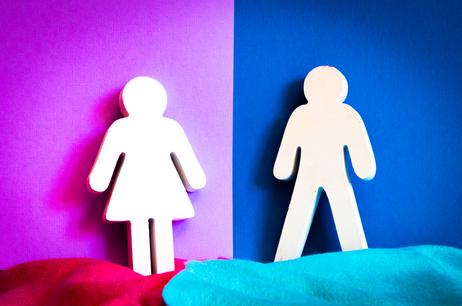Single-sex classrooms have been around for generations, although they have been primarily limited to elite private schools where academics are revered and rewarded no matter what the student’s gender. Today, same-sex classes are beginning to crop up in public schools across the country, thanks to relaxed restrictions by the U.S. Department of Education. Is there a benefit to segregating children into classrooms according to gender? Both the opinions of educators – and the research supporting those opinions – appear to be widely mixed.
Are Single-Sex Classrooms Becoming More Prevalent?
According to the Huffington Post, there were approximately one dozen schools across the U.S. offering single-sex classrooms in 2002. Currently, around 500 public schools offer some sort of single-gender classroom options for students and their parents. The exponential growth of single-sex classrooms in recent years has to do with policy changes by the U.S. Department of Education, which relaxed the requirement to segregate students within public classrooms. The changes involved Title IX, the federal law that prohibits discrimination of students in public schools, based on their gender.
In 2006, the Department of Education determined that same-sex classrooms should be allowed under Title IX since some children learn better in single-sex classrooms than coed environments. The law requires single-sex classroom options to be completely voluntary, and it requires schools to offer traditional coed classrooms at the same time. According to the Department of Education’s website, “If a single-sex classroom is provided, the important objective must be implemented in a manner that treats male and female students even-handedly.”
Why Single-Sex Classrooms?
Many of the single-sex classrooms that have been implemented today may have been created in response to research that indicates boys do not perform as well as girls in a coed classroom. According to Slate, some research showed that boys in a coed environment, particularly minority boys, do not score as highly on tests and graduated at a lower rate than their female counterparts. The New Yorker adds that girls have been beating out boys in a variety of other academic achievements as well, including grade point averages, school leadership, and college enrollment.
Those who argue in favor of single-sex classrooms say that separating the boys from the girls allows instructors to customize their teaching approach to the ways that particular gender learns best. For example, some all-boy classrooms allow teachers to use microphones that keep their voices at a precise volume that research shows to be beneficial for male students. Boys may also be allowed to move about the classroom more, according to the theory that boys think and perform better when they can engage in physical activity.
The Benefits of Same-Sex Learning
Research has shown that same-sex learning may have some benefit to students. Some of those benefits include:
- Limited distractions from the opposite sex, particularly at certain ages
- Breakdown of gender stereotypes, when competition between boys and girls is eliminated
- Techniques can be employed by teachers to better engage a single gender
- The environment can be adjusted to accommodate different gender approaches to learning
Dr. Leonard Sax, founder of the National Association for Single Sex Public Education, told the Huffington Post that same-sex classrooms promote less stereotyping.
“We want more girls engaged in robotics and computer programming and physics and engineering,” Dr. Sax told the Huffington Post. “We want more boys engaged in poetry and creative writing and Spanish language.”
Drawbacks of Single-Sex Classrooms
Although there are many potential benefits and supporters of same-sex education, there are many opponents of the movement as well. Some of the criticisms of the approach, listed at GreatSchools.org, include:
- Most teachers are not trained to employ different techniques when instructing boys or girls
- Students will eventually live and work in coed environments, so schools should not limit students’ ability to deal with members of the opposite sex
- Gender differences are not consistent with every boy or girl in a classroom
- Some research indicates that a higher percentage of girls in a coed classroom improves the academic performance of both boys and girls in that class
Many educators have voiced concern that single-sex classrooms encourage stereotypes, rather than breaking them down. The theories that go into teaching techniques for all-boy or all-girl classes are based on generalizations, but not specifics of each student’s personality and temperament. For example, some girls may also benefit from more physical activity in the classroom, while some boys may withdraw from a louder form of instruction. Educators suggest instead that options are provided in classrooms that take individual preferences into consideration, rather than generalized gender differences.
ACLU Cries Foul
One organization that is vehemently opposed to the creation of single-sex classes in public schools is the ACLU. In response to the growing number of same-sex classrooms across the country, the agency launched its own campaign in May, titled, “Teach Kids, Not Stereotypes.” The agency has also sent letters to schools in five states, requiring them to “cease and desist” the practice of single-sex teaching because it violates Title IX.
“This isn’t the right step to address higher dropout rates by boys,” Doug Bonney, legal director of the ACLU of Kansas and Western Missouri, told the Huffington Post. “They promote false stereotypes about sex-based differences that don’t exist. Promoting sex stereotypes can harm both girls and boys.”
Diane Halpern, former president of the American Psychological Association, agrees. Halpern told Slate that previous research does not indicate any measurable benefit of single-sex education. In fact, Halpern asserts that the practice may have plenty of downsides – including an increase in stereotyping.
“Stereotyping increases, so we really do have lots of data that says it’s just not supported,” Halpern said.
Which side is right? Time will tell, especially as more and more schools open single-sex classrooms and provide more real-life research data to determine which theories are correct in practice.
Questions? Contact us on Facebook. @publicschoolreview















